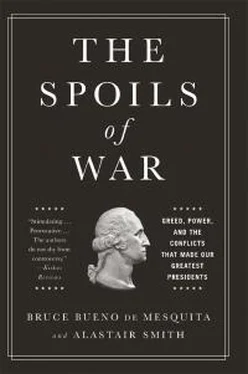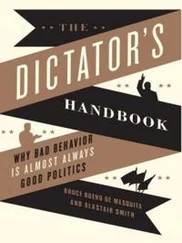The civil rights movement had been invigorated by the hardships of the Depression. Its most prominent leaders, such as the NAACP’s Walter White, the Urban League’s T. Arnold Hill, and the forceful trade unionist A. Philip Randolph, founder and leader of the Brotherhood of Sleeping Car Porters, threatened the president with a march on Washington against racial discrimination. To avoid the march, Roosevelt agreed to meet with these leaders in the Oval Office and he issued the executive order we have already discussed. During that meeting (which Roosevelt secretly recorded) on September 27, 1940, the question of an integrated military was brought up by Randolph and White. Here is the transcript of that portion of the discussion:
VOICE:
The Negro is trying to get in the army!
FDR:
Of course, the main point to get across in building up this draft army, the selective draft, is that we are not as we did before so much in the World War, confining the Negro in to the non-combat services. We’re putting him right in , proportionately, into the combat services .
RANDOLPH:
We feel that’s something.
FDR:
Which is, something. It’s a step ahead. It’s a step ahead.
WHITE:
Mr. President, may I suggest another step ahead?
This has been commented on by many Negro Americans, and that is that we realize the practical reality that in Georgia and Mississippi [FDR: Yeah.] it would be impossible to have units where people’s standard of admission would be ability. . . . I’d like to suggest this idea, even though it may sound fantastic at this time, that in the states where there isn’t a tradition of segregation, that we might start to experiment with organizing a division or a regiment and let them be all Americans and not black Americans or white Americans—working together.
Now, there are a number of reasons why I think that would be sound, among them that I think it would be a practical work for democracy and I think it would be less expensive and less troublesome in the long run.
FDR:
Well, you see now Walter, my general report on it is this. The thing is, we’ve got to work into this. . . . 33
Despite FDR’s statement that Negroes would be represented proportionately in combat units, this proved not to be the case throughout his presidency. Even when there were eventual efforts to have a proportionate number of African Americans in the armed forces, they were overwhelmingly placed in noncombat positions, mostly serving either as unskilled laborers or as cooks and servants. Following the meeting in the Oval Office, the White House issued a press release implying that the civil rights leaders had agreed to the president’s proposed program, which called for a segregated military rather than the integrated military the recording showed had been asked for. As army historian Morris MacGregor reports, “To have their names associated with any endorsement of segregation was particularly infuriating to these civil rights leaders, who immediately protested to the President. The White House later publicly absolved the leaders of any such endorsement, and Press Secretary Early was forced to retract the ‘damaging impression’ that the leaders had in any way endorsed segregation.”34
The president’s cautious, politically fearful approach to desegregation in the armed forces was very much in keeping with the second Roosevelt. As commander in chief he could have integrated the military by fiat, but he dared do no such thing. Instead, he took a minimalist approach, despite the fact that there had been integrated combat units during the American Revolution and throughout the Union’s army and naval efforts in the Civil War. The idea was not new and it was not untested, although it had been abandoned in favor of segregated units following the Civil War. The great experimenter, the man who had declared, “It is common sense to take a method and try it: If it fails, admit it frankly and try another. But above all, try something,” was unwilling to try this experiment.35 FDR’s hypocrisy was not lost on the civil rights leadership. He had declared the four freedoms (freedom of speech, freedom of religion, freedom from want, and freedom from fear) in his 1941 State of the Union address. The African American leadership in turn pushed their Double V campaign: freedom from fascism abroad and freedom from Jim Crow at home.
Segregation ran the gamut of military practice. There were segregated selective service call-ups; blacks were relegated to labor rather than combat in the army, and to unskilled shore duty or to serve—literally to serve—as stewards on board ships in the navy. Even the steward role came in for complaints. Blacks were generally kept off navy ships because the navy did not have sufficient resources to maintain all-black ships and its leadership was hostile to the idea of integrated vessels. Secretary of the Navy Frank Knox told the president that “men live in such intimacy aboard ship that we simply can’t enlist Negroes above the rank of messman.”36 Roosevelt reluctantly accepted this judgment even as he looked for a way, as he had said in the Oval Office meeting, “to work into this.” That way, according to his politically supercautious approach, was to “make a beginning by putting some good Negro bands aboard battleships.”37 What exactly “good Negro bands” would do on battleships was not obvious, but that was the president’s idea of how to “work into this.” His idea seemed to gain traction as he continued to press for an additional role beyond just messmen for African American members of the navy. “[T]he Inspector General of the Navy, Rear Adm. Charles P. Snyder, . . . suggested that the board consider employing Negroes in some areas outside the servant class: in the Musician’s Branch, for example, because ‘the colored race is very musical and they are versed in all forms of rhythm.’”38
The opportunity for combat roles or other duties that gave black soldiers or sailors an equal opportunity to contribute to the war effort were few and far between. The chance for promotion to the rank of officer was almost nonexistent, and where it did exist, black officers were clearly treated as beneath even lower-ranked white officers. Pressure for change was tied to the election cycle and not to the war effort per se. Indeed, so electorally motivated was Franklin Roosevelt that he allowed the segregation of the armed forces to become a financial and administrative burden that impeded the war effort. Training facilities were separate by race and, most assuredly, they were not equal. The same was true of mess halls, recreational facilities, officers clubs, and every other aspect of the black military experience. The inefficiencies produced by across-the-board segregation and its associated duplication of effort were not lost on the military, although their solutions were as risk averse as Roosevelt’s.
Colonel Edwin Chamberlain headed an army group in 1942 that created what became known as the Chamberlain Plan. As his group observed,
It was a waste of manpower, funds, and equipment, therefore, to organize the increasingly large numbers of black recruits into segregated units. . . . To avoid both the waste and the strife, Chamberlain recommended that the Army halt the activation of additional black units and integrate black recruits in the low-score categories, IV and V [allegedly measuring ability but actually measuring education], in to white units in the ratio of one black to nine whites. The black recruits would be used as cooks, orderlies, and drivers, and in other jobs which required only the minimum basic training and which made up 10 to 20 percent of those in the average unit. Negroes in the higher categories, I through III, would be assigned to existing black units where they could be expected to improve the performance of those units. . . . To those who objected on the grounds that the proposal meant racial integration, Chamberlain replied that there was no more integration involved than in “the employment of Negroes as servants in a white household.”39
Читать дальше












